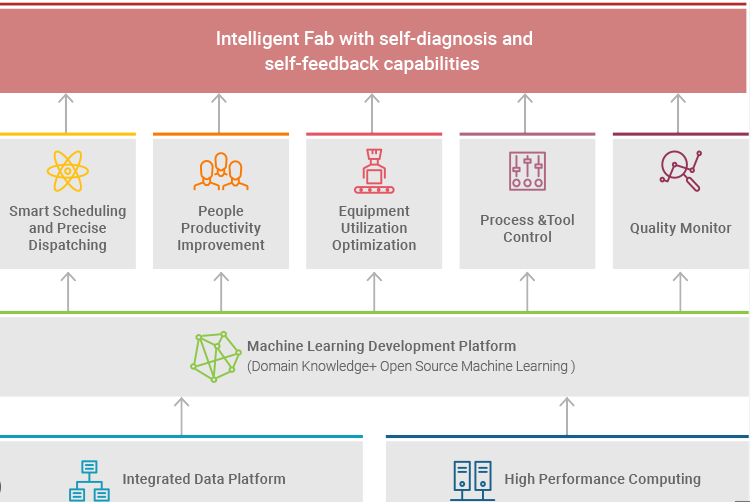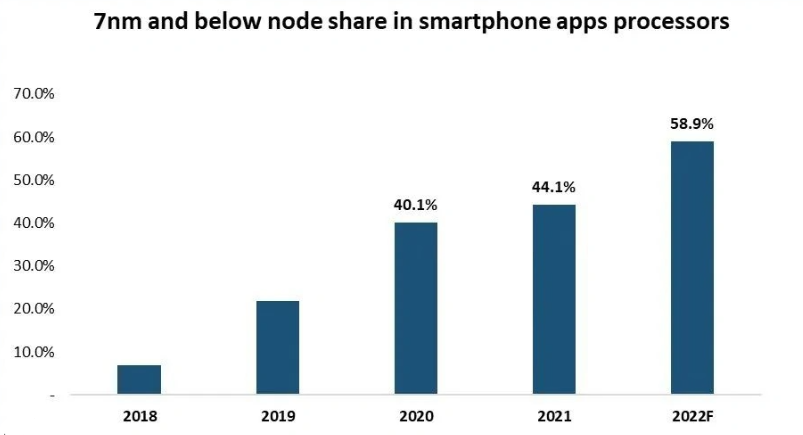Every three years or so, TSMC experiences a recession. Sometimes this recession involves declining revenue, and it’s always related to a year-over-year decline in silicon wafer etch starts (measured in 12-inch wafer start equivalents). Sometimes, when things are really bad, the declines are not just annual but sequential.
This was the case when the Great Recession hit in late 2008 and early 2009, again in two quarters in the second half of 2015, and again in late 2018 and the first half of 2019. Some of it has to do with shifts in the PC and smartphone markets, and some has to do with transformations in manufacturing processes. Oddly enough, when the coronavirus pandemic hit in early 2020 and stayed with us for more than two years, it wasn’t a recession — meaning two straight quarters of decline — but an impact on smartphones, PCs, and high-end processors. Demand Servers are in such high demand that TSMC has just weathered all this economic uncertainty and met this huge wave of demand as we shift to working from home.
The irony is that the pandemic is now largely under control (even though it may not really be over), and TSMC is struggling to keep its fabs running at full speed on its leading edge and mature chipmaking processes. This is at the tail end of the chip shortage.
Since TSMC is the most important chip foundry in the world, the question we all have to ask is whether this personal decline is a lagging indicator, meaning it’s really just a case of the company buying excess supply last year and needing to burn capacity A performance, or a leading indicator, which means it predicts some tough times for the IT market and the global economy. TSMC wasn’t that important during the dot-com bust, so we don’t have the numbers. But the timing between TSMC’s slowdown and the global slowdown is interesting. At first glance, TSMC sometimes leads and sometimes lags behind.

For the first quarter of 2023, which ended in March, TSMC’s sales were $16.72 billion, down 4.8%, in stark contrast to growth of 36.1%, 36.3%, 35.9% and 26.7% in the previous four quarters. Net revenue grew faster than in previous quarters, but fell 6.3% year over year in the first quarter of 2023 to $6.8 billion, or 40.7% of revenue. That’s still staggering, three percentage points higher than the average profitability set by TSMC over the past five years.
Wafer start recession is real. In the fourth quarter of 2022, TSMC’s 12-inch wafer equivalent start volume hit a record high of 3.97 million pieces. In Q1 of 2023, it decreased by 0.6% year-on-year to 3.7 million pieces. What’s more disturbing is that the decline rate was as high as 6.8%. The fourth quarter of 2022 continued to decline 12.8%, and in the first quarter of 2023, it will continue to decline by 12.8%. Average revenue generated per wafer continues to be high at $5,181, but reaches an all-time peak of $5,384 in 4Q22. The average revenue per wafer from 2018 to 2021 is $3,623, just to give you some context, and it’s been gradually rising.
The reason, of course, is that TSMC has the most advanced computing engine foundry in the world. What hurt the company so badly was the rapid decline in smartphone sales and PC chip sales, which fall into a category that TSMC calls “HPC” but we can call CPUs, GPUs, FPGAs, and custom ASICs. (It would be interesting to see revenue broken down by data center, PC, smartphone, and others.)
In contrast, the Internet of Things, automotive, digital consumer electronics and other areas listed in TSMC’s financial report accounted for only 22% of revenue in the first quarter of 2023. Interestingly, revenue in the so-called HPC segment rose 2.1% to $7.36 billion in sales. Smartphone chip manufacturing revenue fell 19.1%, and we think that if you let go of PC chips, data center chip manufacturing is likely to remain strong even with a bit of a turbulent economy.
We could say even more if we had those data center chips — server CPUs, GPU accelerators, FPGAs, network switch and router ASICs, SmartNICs, and DPU chips, etc. — freed from PCs and edge products in the HPC space. But TSMC has not disclosed such information, and it is suspicious to use the HPC part as a proxy for the data center, because there is a lot of PC data there.
The main consideration is that the utilization rate of TSMC’s fabs is falling, which is always bad for chip foundries, which need to run at maximum utilization to generate profits, while their electricity costs have risen by 15% this year. It is up 17% from the second half of 2022 and 17% from this year. The upscaling of the N3 process based on 3nm geometries, the expansion of the fab to the US is a bit of a nightmare, and general inflation is also hitting margins.

With all of this in mind, TSMC will need to cut some costs, and it will come from the capital expenditure budget, currently expected to be between $32 billion and $36 billion. TSMC reiterated that it is accelerating the 3N process this year, and the capacity that can be carried will be fully utilized in 2023, which will contribute revenue in the third quarter of this year, accounting for a mid-single-digit percentage of wafer production. In 2023, driven by HPC and smartphone segments. The refined N3E process is scheduled for mass production in the second half of this year, and the tape-out volume of N3 and N3E is more than twice that of the same period of the N5 5nm process development cycle.
TSMC’s N2 process, which shrinks transistor geometries down to 2 nanometers, is expected to be in mass production by 2025, and many CPUs, GPUs, and custom ASIC designs will rely on it.
The TSMC plant in Arizona started using the 4nm 4N process for Nvidia GPUs and CPUs and will start volume production in 2024. The expansion of the 28nm fab in Taiwan has been put on hold to support more advanced processes.
After the TSMC team revealed the downturn in this year’s industrial prosperity and the changes in the Kaohsiung factory plan, it specifically revealed more details of the plan that are of concern to the outside world, including four major development drivers:
In the continuous evaluation of European factories, aiming at automotive chips:
TSMC is in contact with customers and partners to evaluate the further possibility of setting up factories in Europe. The principle of judgment is still based on “customer needs” and “level of local government support”, and it is expected to focus on special processes for automotive technology. The model may imitate the construction of the Kumamoto factory in Japan, and seek local partners to build together, and the possibility of joint ventures cannot be ruled out.
AI is hot, and AI chips seem to have a play:
Many foreign investors have asked whether the server business opportunities brought by ChatGPT will drive AI artificial intelligence chip business opportunities? At present, AI chips mostly use advanced manufacturing processes (below 7 nanometers), and now we can see little by little inquiries and orders. “The overall trend is positive for us, but how much it can contribute is too much now Good morning,” Wei Zhejia said.
The 3nm yield rate is good, and the extended process (N3E) will be mass-produced in the second half of the year:
Wei Zhejia, who has always expressed confidence in his own yield rate, once again expressed his “good yield rate” today. He also pointed out that customers’ demand for 3nm exceeds TSMC’s supply capacity. It is expected that the process will be fully utilized in 2023 and will contribute a large amount of revenue from the third quarter of 2023. It is expected to account for TSMC’s 2023 wafer sales. Received “mid-single digit” (middle single digit, 4-6%). The N3E process of the 3nm extension family has passed verification and achieved performance and yield targets, and is expected to be mass-produced in the second half of 2023. In the first and second years of mass production of the 3nm family, the number of finalized product designs will be more than twice that of 5nm.
There is no suspense for 2nm mass production, which will be realized in 2025:
Wei Zhejia said, “The research and development of 2nm process technology is progressing smoothly, and will enter mass production in 2025 as scheduled.” TSMC’s 2nm technology will adopt a nanosheet transistor structure to demonstrate energy efficiency. The performance and power consumption efficiency will be improved by a generation to meet the increasing demand for energy-saving computing. In addition, 2nm has aroused the interest and participation of many customers in the field of high-speed computing and smart phone applications, suggesting that orders are expected.
Interestingly, this quarter’s revenue is the first negative growth after TSMC’s 11 consecutive quarters of growth. It is also the first time that TSMC’s management team communicated face-to-face with the media after the 11 consecutive quarters of TSMC’s online statement, which can be regarded as announcing the end of the epidemic era. .
Overall, TSMC’s 2023 full-year forecast is still growing, but the recovery in the second quarter may be limited. The performance outlook for the second quarter revealed this time is conservative, and the three major financial forecasts are bottoming out: including consolidated revenue forecasts Between US$15.2 billion and US$16 billion; gross profit margin is expected to be between 52% and 54% (the gross profit margin in the second quarter will be 0.5% due to the 17% increase in Taiwan’s electricity tariff); the operating profit margin is expected to be between 39.5 % to 41.5%.
Post time: Apr-25-2023
